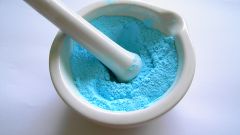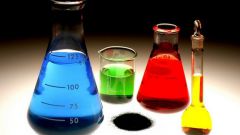You will need
- Mendeleev's periodic table, calculator.
Instruction
1
Determine the chemical form of the substance, the mass fraction of elements which you want to find. Take the periodic system of Mendeleev and find the cells corresponding to the atoms included in the molecules of that substance. In the cell, find the mass number of each element. If the found value of the mass number of an element is fractional, round it to the nearest integer.
2
In the case where atoms of one type is found in the molecule a few times, multiply this number their atomic mass. Kojima of the masses of all the elements included in the composition of the molecules, to obtain the value in atomic mass units. For example, if you want to find the mass of the molecules of the salt which is called sodium sulfate (Na2SO4), determines the atomic mass of sodium Ar(Na)=23, Ar of sulphur(S)=32 and oxygen Ar(O)=16. Since the molecule contains 2 atoms of sodium, then it take the value of 23*2=46, and for oxygen, which atom 4 - 16*4=64. Then the mass of the molecules amount of sodium sulfate will be Mg(Na2SO4)=46+32+64=142.
3
To calculate the mass fraction of the elements included in the composition of the molecules of the given substance, find the mass ratio of constituent atoms in a molecule of a substance to the mass of the molecule and multiply the result by 100%. For example, if we consider sodium sulphate Na2SO4, calculate the mass fraction of elements as follows:- mass fraction of sodium will be ω(Na)= 23•2•100%/142=32,4%;
- mass fraction of sulfur will be ω(S)= 32•100%/142=22,5%;
- mass fraction of oxygen will be ω(About)= 16•4•100%/142=45,1%.
- mass fraction of sulfur will be ω(S)= 32•100%/142=22,5%;
- mass fraction of oxygen will be ω(About)= 16•4•100%/142=45,1%.
4
Mass fractions indicate the relative content of elements in the molecule. Check up correctness of calculation, adding the mass fraction of the substance. Their sum must add up to 100%. In this example 32,4%+22,5%+45,1%=100%, so the calculation is correct.










